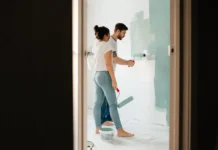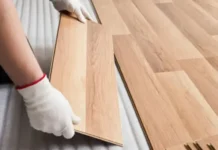A substantial portion of the US has naturally-occurring hard water, which makes hard water a common problem in households across the nation. At a minimum, it can leave skin or hair dry. Worse, it can damage appliances like dishwashers with a mineral buildup.
That also means that there is a good chance your home contains some kind of water softener system. Unlike some systems in a home, water softeners prove fairly reliable. Yet, even these reliable systems can break down from time to time.
If your system has gone off the rails, keep reading for our DIY guide on water softener repair.
Disconnect the System
Make sure you disconnect the system from the water supply before you begin. Otherwise, you may find yourself mopping up a huge mess. You should also disconnect the system from any electrical sources, if necessary.
Check and Clean the Brine Tank
You should begin your repair efforts with the brine tank. One of the most common problems with water softener systems is a salt dome. In essence, the salt forms a shell that makes it look like your system has enough pure salt for the system.
You should crack that shell and vacuum out the pieces with a shop vac. Afterward, scrub the tank interior with a mild soap and water mix. Rinse the tank thoroughly before reconnecting it.
Salt domes typically show up if you add salt too often. Check the manufacturer’s recommendations for when and how much salt you should add.
Check and Clean the Resin Bed
Most systems use beds of resin or resin beads as part of the filtration process. While the resin doesn’t normally require attention, iron-heavy water can impact the performance of the beads. You can use a variety of rust removal products that you run through the system.
If those don’t work, you can also replace the resin entirely.
Replace the System
In some cases, you may inherit a water softening system when you buy a house. These inherited systems often prove more troublesome since you can’t know how well-maintained they were.
In these cases, you may find replacing the system with a RainSoft system or a similar option more practical than repairs. You can learn more about Rainsoft water softeners here. Replacing your system can offer you more peace of mind than repairing an old system.
DIY Water Softener Repair the Smart Way
Water softener repair as a DIY project can make sense if you handle it the smart way.
Always disconnect the system from the main water supply and electricity. You’ll spare yourself some messes and a few serious hazards as well.
Start with the most likely candidates first. A problem with the brine tank or the resin bed are the most likely culprits.
Not every system is worth the time, effort, or cost of saving it. If you inherited the system, replacement may prove more productive in the long term.
Looking for some more home improvement tips? Check out the articles in our Real Estate section.



































































